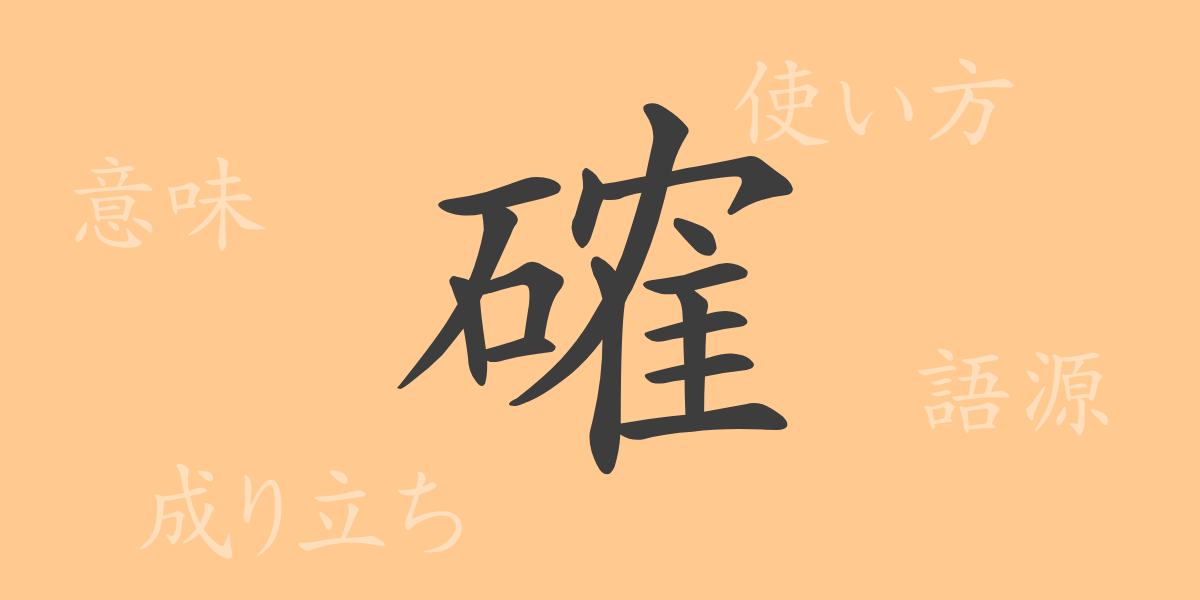Kanji in the Japanese language, like threads weaving meaning, shape words and enhance the quality of communication. The kanji “確” (Kaku) plays a particularly important role within this system. Frequently used in daily life, this kanji symbolizes our acts of assurance and verification. This article delves into the origins of “確” (Kaku), its usage, and even explores idioms and phrases to reveal its full scope.
The Origin (Etymology) of 確
The kanji “確” (Kaku) originates from ancient China, formed by the combination of the character “石” (Isi) meaning stone, and “堅” (Ken), indicating the sound. This combination gave rise to the meanings “certain” and “firm,” and over time, it also came to be used for the act of “confirming.”
The Meaning and Usage of 確
“確” (Kaku) conveys the idea of something being “certain” or “sure,” indicating a state beyond doubt. It is also used as in “確認” (Kakuninn), which means checking something to ensure there are no errors. The kanji is widely used as an adjectival verb, noun, and verb.
Readings, Number of Strokes, and Radical of 確
Understanding the readings and elements that compose the kanji “確” (Kaku) is also important.
- Readings: The on’yomi (Chinese reading) is “かく” (kaku), while the kun’yomi (Japanese reading) is “たし” (tashi) or “たしか” (tashika).
- Number of Strokes: “確” (Kaku) has a total of 15 strokes.
- Radical: The radical is “石” (Isi), categorizing it among kanji related to stone.
Idioms, Phrases, and Proverbs Using 確 and Their Meanings
There are many idioms and phrases that include “確” (Kaku), each with its unique meaning and usage.
- 確認 (Kakuninn): To check facts or content again.
- 確率 (Kakuritu): The degree of probability that an event will occur.
- 確立 (Kakuritu): To establish a firm foundation.
- 確信 (Kakusinn): To believe without doubt.
- 確実 (Kakujitu): Something that is without mistake.
These idioms and phrases are frequently used in everyday conversation and business settings.
Summary on 確
The kanji “確” (Kaku) is a significant character that symbolizes certainty and reliability. As a common kanji in Japan, its meanings and usages are deeply rooted in our lives. Through this article, we have been able to understand the rich expressiveness of “確” (Kaku) and the history behind it. Realize how the certainty of words can enrich communication even further.

























